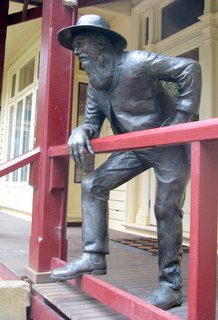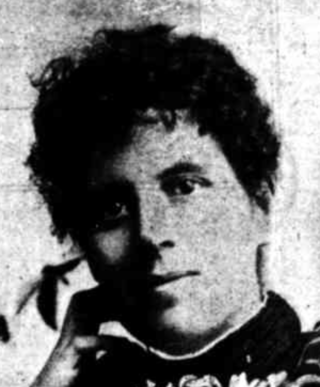
"The Man From Ironbark" is a poem by Australian bush poet Banjo Paterson. It is written in the iambic heptameter.

Jennings Carmichael was an Australian poet and nurse.
"Up The Country" is a popular poem by iconic Australian writer and poet Henry Lawson. It was first published in The Bulletin magazine on 9 July 1892, under the title "Borderland." Its publication marked the start of the Bulletin Debate, a series of poems by both Lawson and Andrew Barton "Banjo" Paterson asserting contrasting views of the true nature of life in the Australian bush.
In Defence of the Bush is a popular poem by Australian writer and poet Andrew Barton "Banjo" Paterson. It was first published in The Bulletin magazine on 23 July 1892 in reply to fellow poet Henry Lawson's poem, Up The Country. Paterson's rebuttal sparked the Bulletin Debate, a series of poems by both Lawson and Paterson about the true nature of life in the Australian bush.
The City Bushman is a poem by iconic Australian writer and poet Henry Lawson. It was first published in The Bulletin magazine on 6 August 1892, under the title In Answer to "Banjo", and Otherwise. It was the fourth work in the Bulletin Debate, a series of poems by both Lawson and Andrew Barton "Banjo" Paterson, and others, about the true nature of life in the Australian bush.
This article presents a list of the historical events and publications of Australian literature in 1892.
"Bell-Birds" is a poem by Australian writer Henry Kendall that was first published in The Sydney Morning Herald on 25 November 1867.
Saltbush Bill is a humorous poem by Australian writer and poet Andrew Barton "Banjo" Paterson. It was first published in The Bulletin magazine on 15 December 1894, the Christmas issue of that publication.
The Old Whim Horse is a poem by Australian writer and poet Edward Dyson. It was first published in The Bulletin magazine on 30 July 1892, and later in the poet's collection Rhymes from the Mines and Other Lines (1896).
The Women of the West is a poem by Australian poet George Essex Evans. It was first published in The Argus newspaper on 7 September 1901, and later in the poet's poetry collection The Secret Key and Other Verses (1906).

The Teams is a poem by Australian writer and poet Henry Lawson. It was first published in the Australian Town and Country Journal on 21 December 1889. It was later published in the poet's poetry collection In the Days When the World Was Wide and Other Verses in 1896.
Where the Pelican Builds is a poem by Australian poet Mary Hannay Foott. It was first published in The Bulletin magazine on 12 March 1881, and later in the poet's collection Where the Pelican Builds and Other Poems (1885).
Poems (1895) is a collection of poems by Australian poet Jennings Carmichael. It was published in hardback by Longmans, Green, and Co in London, and Melville, Mullen and Slade in Melbourne in 1895.
"The Song of Old Joe Swallow" (1890) is a poem by Australian poet Henry Lawson.
"The Buried Chief" (1886) is a poem by Australian poet Henry Parkes.
"Song of the Shingle Splitters" (1874) is a poem by Australian poet Henry Kendall.
"A Storm in the Mountains" (1856) is a poem by Australian poet Charles Harpur.
"Peter Simson's Farm" (1896) is a poem by Australian poet Edward Dyson.
"A Bushman's Song" (1892) is a poem by Australian poet A. B. Paterson.
"The Roaring Days" (1889) is a poem by Australian poet Henry Lawson.


